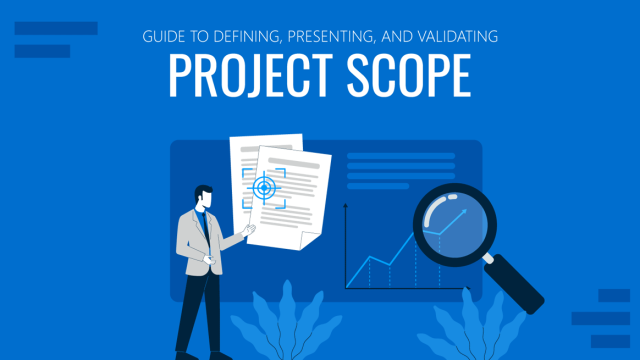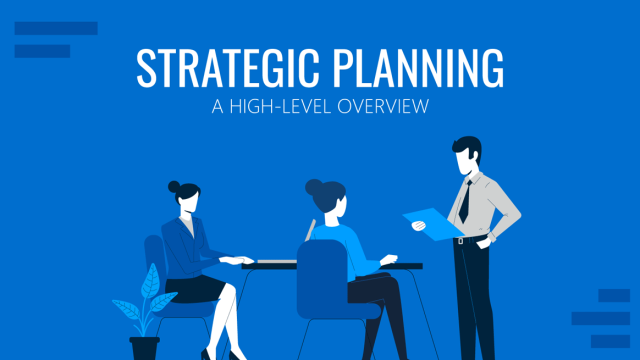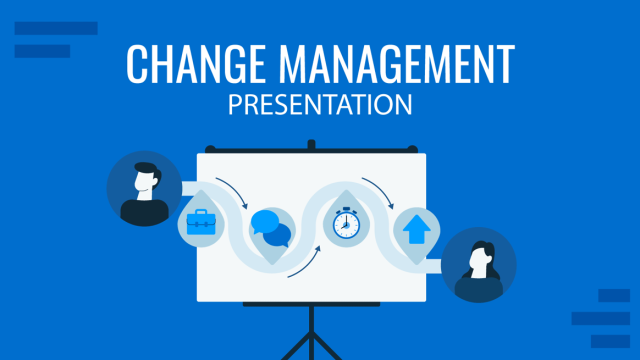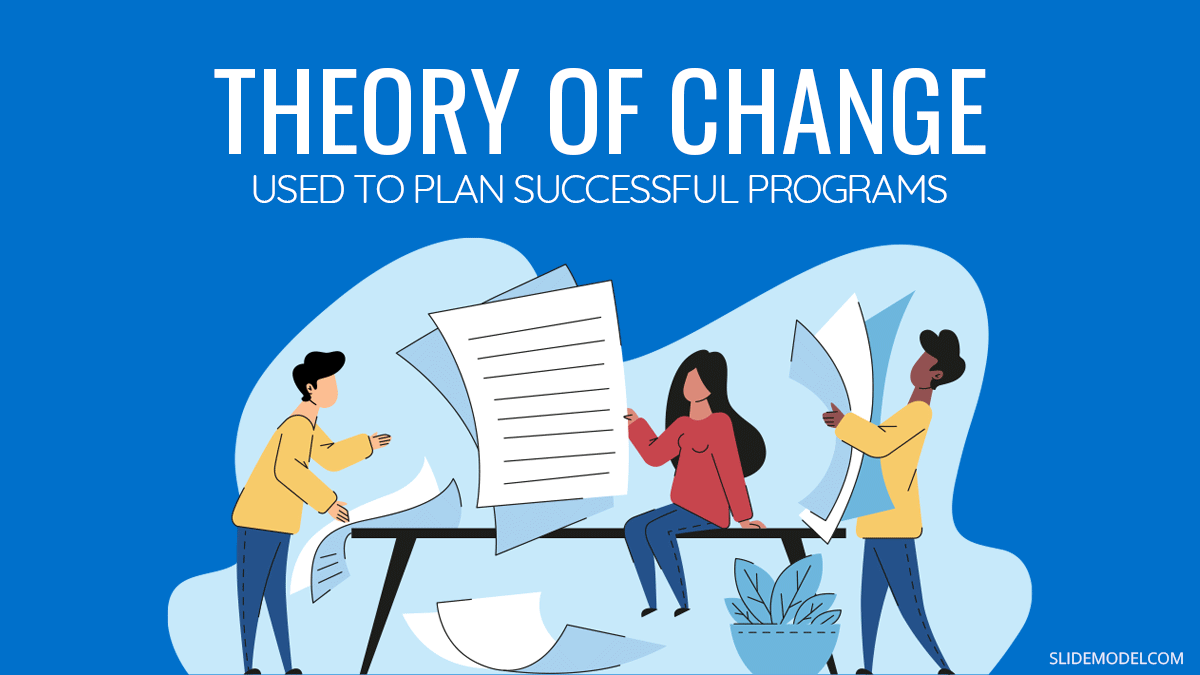
Humans are resistant to change; especially one imposed externally. We may prefer the status quo, even if the proposed changes improve our lives. Program managers and policy-makers are well-aware of this tendency. Yet, they manage to drive successful outcomes even for the most challenging initiatives. How come? Before getting down to work, they put down comprehensive plans. Theory of Change is one of the popular frameworks to use for change-seeking projects.
What is Theory of Change?
Theory of Change (ToC) is a specific type of methodology used by business entities, not-for-profit organizations, political groups, and governments to plan and promote social change.
The theory of change model attempts to map how and why certain desired changes happen in a particular setting. Unlike other approaches, ToC attempts to glean into the “missing middle” — the gap between the core activities aimed at fostering change and the final outcomes (the results of change).
To obtain such information, this change theory proposes to use a top-bottom approach. First, formalize the desired long-term outcomes. Then work backward to determine which activities, drivers, and stimuli should be in place to reach the goals. Finally, place all impacts, inputs, and activities, on the Outcomes Framework.
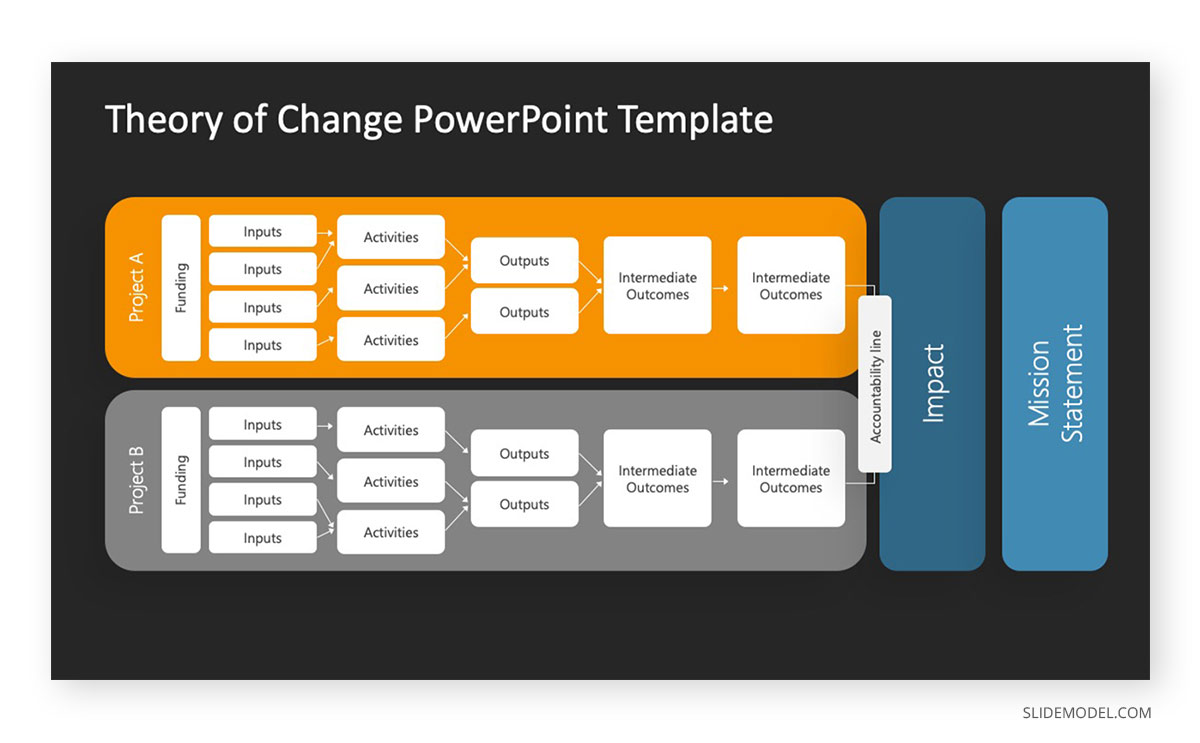
Theory of Change Origins
It’s hard to peg the exact theory of change definition to only one author. Donald Kirkpatrick proposed some of the cornerstone social change ideas for this theory in his ‘Four Levels of Learning Evaluation Model’. Daniel Stufflebeam’s CIPP (context, input, processes, and products) framework, and Lewin’s theory of change. All this theories have in common that they discuss the importance of understanding causal relationships between different inputs, activities, and outputs in the context of fostering social and organizational change.
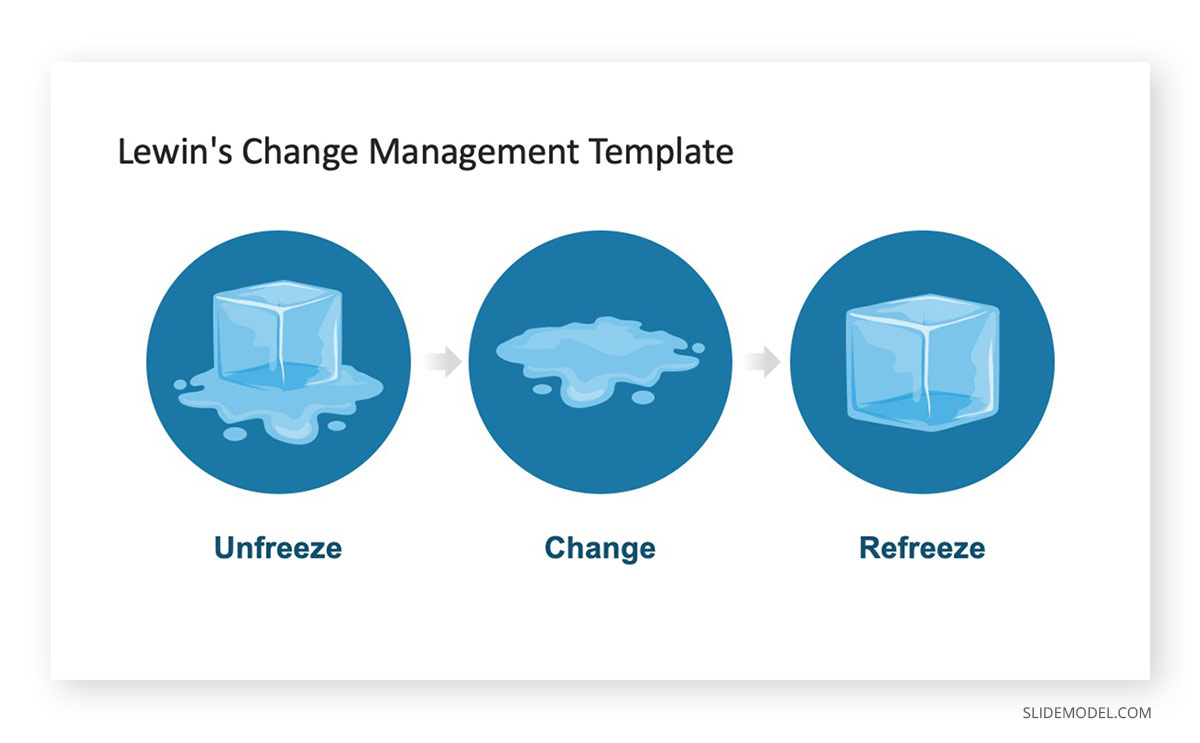
However, the scientific community agrees that Carol Weiss, an American scholar of education and policy analysis, popularized the term “Theory of Change” in its modern context.
Weiss defined theory as a system of micro-activities and connections that lead to the ultimate policy goal when combined. She encouraged leaders and policy-makers to break down lofty community initiatives (e.g. improving school graduation rates in a community) into more precise steps. Afterwards, evaluate how different steps and factors contribute to the desired change through causal analysis. It is easier to trace how specific drivers lead to desired outcomes and optimize the policy actions further.
Theory of Change Use Cases
ToC methodology is well-adaptable to an array of initiatives — from corporate change management plans to volunteer-led community projects. It’s a great framework for leaders who want to map actions to specific outcomes and optimize their policy (activity) performance.
Some of the frequent theory of change use cases include:
Policy evaluations: ToC enables you to systematically collect data, link actions to outcomes, and analyze the results. A ToC model can help you identify what’s working and what’s not. Even more importantly, it helps learn how, why, what, and who drives change. You can then communicate the results to other stakeholders and decide which activities are worth scaling.
Policy (initiatives) planning: ToC forces you to think from a different perspective and explore different scenarios and drivers. Such a line of thinking helps locate weaker areas, identify risks, and perhaps even spot unexpected patterns within successful initiatives. When you know how different cogs in your plan contribute to the result, you can implement strategic optimizations.
Strategy planning: A strong business case is important for launching a product. A theory of change template serves a similar purpose for programs and policies. ToC can serve as a roadmap for implementing your company vision over the next 5-10 years, or flesh out important details and contexts for operational, go-to-market, or business plans.
Theory of Change Examples in Action
Let’s place the above use cases into more concrete terms. Here are several real-life ToC examples from different organizations.
Theory of Change for Improving the Quality of General Education in Ethiopia
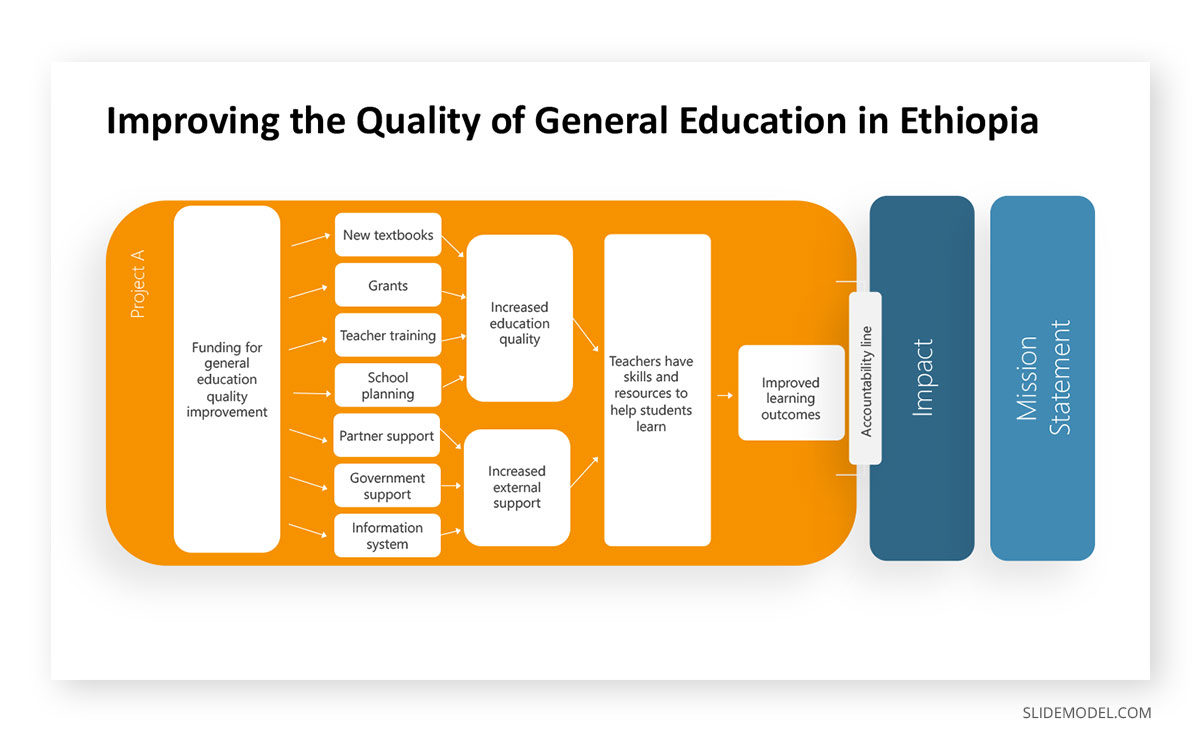
This ToC model was built around the following assumptions:
- A harmonized and aligned approach to financial support will help improve educational outcomes.
- Investing in teacher training and professional development will positively affect the quality of tutoring.
- A better supply of textbooks is a positive driver too. Same as higher accountability of schools to communities.
- Thus, schools should be provided with more discretionary spending.
- Together all these outputs will drive positive outcomes such as higher student retention and lower gender gap.
The Superwoman Project
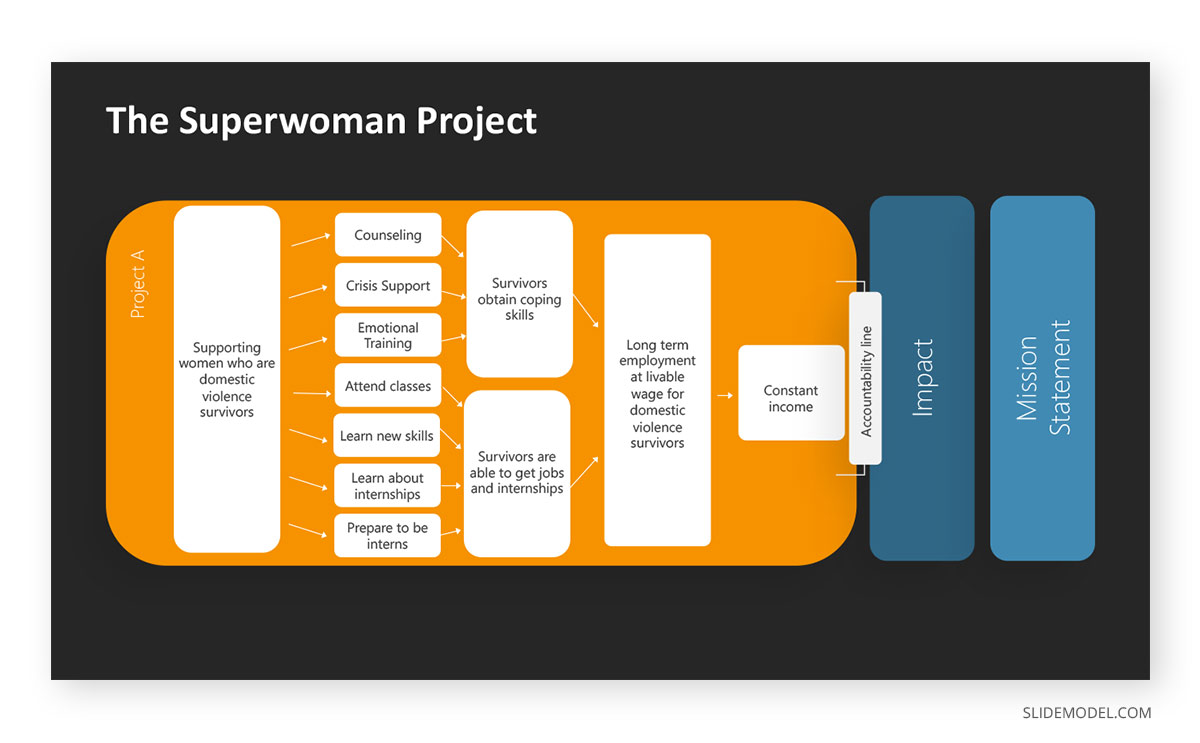
Here’s an example of backward mapping for a theory of change model. The project authors were assessing different actions that could help improve the lives of domestic abuse survivors. The project leaders theorized what such women would need to reintegrate back to society successfully. During the discussions, they determined that they should focus on helping women develop:
- Psychological coping skills
- Marketable skills in non-traditional jobs
- Appropriate workplace behaviors
And the optimal means for fostering these outcomes are workplace internships, training, and counseling.
How to Create a Theory of Change Model
Theory of change modeling is similar to mind mapping. Your goal is to determine causative connections between different elements of your program. Plus, perform low-key root cause analysis to drill down to the main catalysts for change. Here’s a guided walkthrough of the change theory’s main stages with commentary for creating a ToC model.
1. Determine Your End-Goals
ToC prompts you to move from top to the bottom — from goals and assumptions to more specific action. Hence, your first step is to determine your main objectives:
- How do you plan to use your ToC model?
- What inputs can you provide and what outcomes do you expect to receive?
- What types of measures you’ll use for evaluation?
At this step, you should formalize the purpose of your theory of change, analyze the available resources, and determine who will be involved in the change process (and to what extent). Create a workgroup to discuss and agree on specific long-term goal(s). Also document all the assumptions.
Use the above to create an impact statement — a brief summary of the broad or long-term difference you want to make. At the end of the session, visualize all the data on your theory of change template.
2. Collect Supporting Data and Evidence
To drive measurable outcomes, your assumptions and subsequent actions should be backed by concrete evidence. In other words, you need to justify the need for intervention and the proposed selection of actions (means) to achieve it.
In particular, you’ll need to collect three types of evidence:
Evidence of need: Detail what the end beneficiaries need, what type of support do they seek.
Evidence of context: Analyze internal and external factors that may affect your work. For example, what other support is already provided to end beneficiaries?
Evidence of the effectiveness: Specify why you are proposing one method over another. You can appeal to past experiences, successful case studies from other organizations, or scientific data. Try to identify the most impactful methods for the type of change you want to foster.
3. Identify What Drives Desired Outcomes
You have a set of possible means ( activities and interventions) and final input; now you need to work backwards fand think about how you can create “pre-conditions” for change. In other words, what factors you can influence or optimize to foster the long-term impact.
For example, you want to improve diversity admissions at a university; think about which root causes prevent diverse students from choosing your institution. Some factors might be, not providing sufficient aid, low awareness about programs among the high-schoolers in diverse communities. Think how the earlier allocated means could help improve these and translate the identified pre-conditions into specific intermediary outcomes you want to achieve.
4. Map Your Intermediate Outcomes Backwards
As a next step, break down the loftier outcomes into more detailed steps. Go on a level deeper and consider which actions can drive the intermediary outcomes and what blockers stand in the way.
Going back to the earlier example: your intermediary outcome is to “Diverse students from District X are considering your school”. How can you make that happen? In several ways:
- Parents of diverse students are informed of the financial options available.
- Students are well-informed of your school curriculum, support, and post-graduation career prospects.
5. Decide on the Optimal Outputs and Activities
Finally, you’ve arrived at the heart of the “messy middle” — outputs. Outputs stand for specific products, services, or facilities, your organization provides to the end beneficiary to help achieve the desired outcomes.
Arguably, this is the most challenging part of the theory of change, especially if you are working with a new project, where limited data is available. Think creatively and don’t rush to discard bold or out-of-the-box ideas. Get back to your earlier evidence and research to try to determine which outputs have brought in the desired outcomes for similar initiatives. Consider adapting these to your project.
For example, a school struggling with diversity may try the following outputs:
- The financial aid department publishes a new tuition guide.
- A new online tuition cost calculator and simulator of financial assistance are developed.
- School representatives hosted promo events at 15 district schools.
- The Uni signed a partnership with a local Youth Center and hosts regular after-school classes.
- TAs and current students are incentivized to join a new mentorship program for high schoolers.
Based on your outputs, identify specific activities (interventions) you will pursue and set the people responsible.
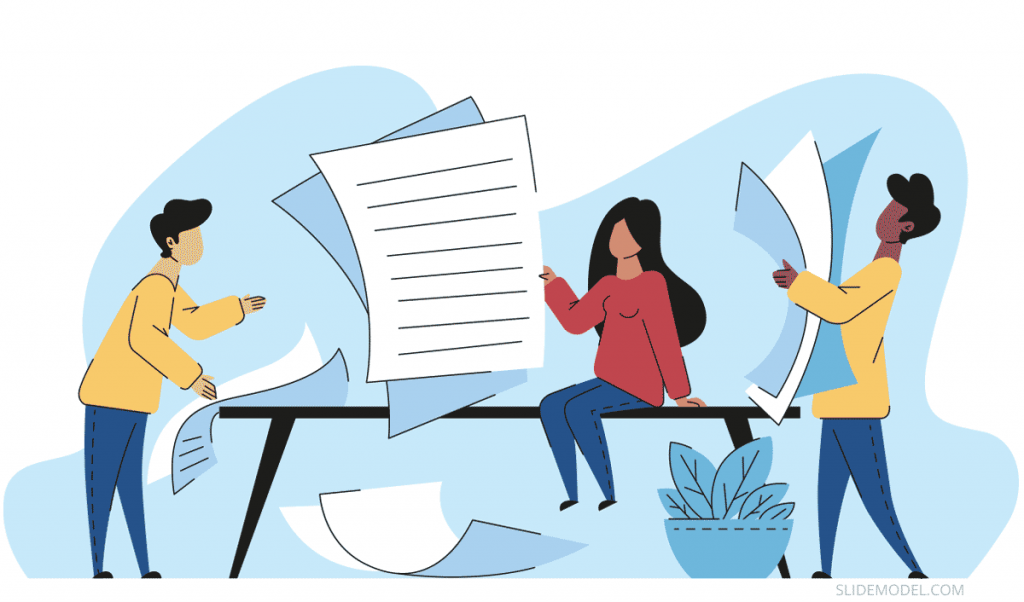
Final Tip: Add a Narrative
Theory of Change helps you lay out a lofty plan into a well-structured map of inputs, activities, and outputs that cumulatively contribute to your end goal. Apart from creating a ToC model, you can also write a complementing meta narrative — a meta description of the program akin to a project charter. Doing so can help communicate your ideas better to project sponsors and other stakeholders, plus help spot-check for any earlier gaps in your thinking.
